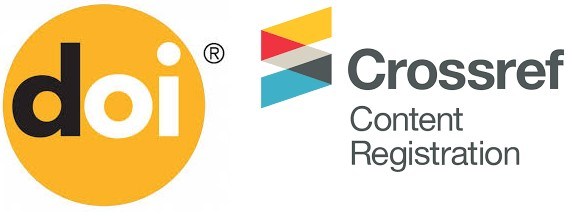Literacy and statistical reasoning of Mexican students upon completion of high school
DOI:
https://doi.org/10.46219/rechiem.v14i3.101Keywords:
Statistics, Statistical Reasoning, Statistical Literacy, SOLO TaxonomyAbstract
In this article we report the results of an investigation with Mexican students on the levels of literacy and statistical reasoning that they have developed throughout their elementary and high school education, using the SOLO (Structure of Observed Learning Outcomes) taxonomy. The instrument used is an online questionnaire that has been adapted from various items of literature and some of the author’s creation. The results indicate that students have low levels of literacy and statistical reasoning in graphic representations and descriptive measures, even though these are themes of the curriculum from primary education; the results are even lower in correlation items, box plots, deciles, and probability.
Downloads
References
Allen, K. (2006). The statistics concept inventory: development and analysis of a cognitive assessment instrument in statistics [Tesis doctoral, University of Oklahoma]. UMI Microform. http://dx.doi.org/10.2139/ssrn.2130143
Australian Curriculum (2018, 26 de octubre). National Numeracy Learning Progression. Australian Curriculum, Assessment and Reporting Authority (ACARA). https://www.australiancurriculum.edu.au/resources/national-literacy-and-numeracy-learning-progressions/national-numeracy-learning-progression/statistics-and-probability/?subElementId=50841&scaleId=0
Batanero, C., Díaz, C., Contreras, J., y Roa, R. (2013). El sentido estadístico y su desarrollo. Números: Revista de Didáctica de las Matemáticas, 83, 7-18. http://funes.uniandes.edu.co/3651/
Biggs, J., y Collis, K. (1982). Evaluating the quality of learning: The SOLO taxonomy. Academic Press. https://doi.org/10.1016/C2013-0-10375-3
Callingham, R., y Watson, J. (2017). The development of statistical literacy at school. Statistics Education Research Journal, 16(1), 181-201. https://doi.org/10.52041/serj.v16i1.223
delMas, R., Garfield, J., Ooms, A., y Chance, B. (2007). Assessing students’ conceptual understanding after a first course in statistics. Statistics Education Research Journal, 6(2), 28-58. https://doi.org/10.52041/serj.v6i2.483
Estrella, S., Olfos, R., y Mena-Lorca, A. (2015). El conocimiento pedagógico del contenido de estadística en profesores de primaria. Educação e Pesquisa, 41(02), 477-493. https://doi.org/10.1590/S1517-97022015041858
Frost, R., Armstrong, B., y Christiansen, M. (2019). Statistical learning research: A critical review and possible new directions. Psychological Bulletin, 145(12), 1128-1153. http://dx.doi.org/10.1037/bul0000210
Gal, I. (2002). Adults' Statistical Literacy: Meanings, Components, Responsibilities. International Statistical Review, 70(1), 1-5. https://doi.org/10.2307/1403713
Galesic, M., y García-Retamero, R. (2010). Statistical numeracy for health: A cross-cultural comparison with probabilistic national samples. Archives of Internal Medicine, 170(5), 462-468. https://doi.org/10.1001/archinternmed.2009.481
Garfield, J. (1998). The statistical reasoning assessment: Development and validation of a research tool. En L. Pereira-Mendoza (Ed.), Proceedings of the Fifth International Conference on Teaching Statistics (pp. 781-786). The Netherlands: International Statistical Institute. http://citeseerx.ist.psu.edu/viewdoc/summary?doi=10.1.1.219.5316
Garfield, J. (2002). The challenge of developing Statistical Reasoning. Journal of Statistics Education, 10(3). https://doi.org/10.1080/10691898.2002.11910676
Garfield, J. (2003). Assessing Statistical Reasoning. Statistics Education Research Journal, 2(1), 22-38. https://doi.org/10.52041/serj.v2i1.557
Garfield, J., y Ben-Zvi, D. (2008). Developing Students’ Statistical Reasoning: Connecting Research and Teaching Practice. Springer. https://doi.org/10.1007/978-1-4020-8383-9
Inzunza, S. (2015). Niveles de interpretación que muestran estudiantes sobre gráficas para comunicar información de contextos económicos y sociodemográficos. Revista Mexicana de Investigación Educativa, 20(65), 529-555. https://www.redalyc.org/articulo.oa?id=14035408010
Inzunza, S., y Rocha, E. (2021). Los datos y el azar en el currículo de educación básica y bachillerato en México: reflexiones desde la perspectiva internacional. Diálogos sobre Educación: temas actuales en investigación educativa, 12(23), 1-13. https://doi.org/10.32870/dse.v0i22.717
Jacobbe T., Case, C., Whitaker, D., y Foti, S. (2014, 13 al 18 de julio). The LOCUS assessment at the college level: conceptual understanding in introductory statistics [Conferencia]. 9th International Conference on Teaching Statistics, Flagstaff, Arizona. https://icots.info/9/proceedings/pdfs/ICOTS9_3C3_WHITAKER.pdf
Johannssen, A., Chukhrova, N., Schmal, F., y Stabenow, K. (2021). Statistical Literacy-Misuse of Statistics and Its Consequences. Journal of Statistics and Data Science Education, 29(1), 54-62. https://doi.org/10.1080/10691898.2020.1860727
Juárez, A., y Inzunza, S. (2014). Comprensión y razonamiento de profesores de Matemáticas de bachillerato sobre conceptos estadísticos básicos. Perfiles Educativos, 36(146), 13-29. http://www.iisue.unam.mx/perfiles/articulo/2014-146-comprension-y-razonamiento-de-profesores-de-matematicas-de-bachillerato-sobre-conceptos-estadisticos-basicos.pdf
Kahneman, D., Slovic, P., y Tversky, A. (1982). Judgment under uncertainty: heuristics and biases. Cambridge University. https://doi.org/10.1017/CBO9780511809477
Konold, C. (1989). Informal Conceptions of Probability. Cognition and Instruction, 6, 59-98. https://doi.org/10.1207/s1532690xci0601_3
Lecoutre, M. (1992). Cognitive models and problem spaces in purely random situations. Educational Studies in Mathematics, 23(6), 557-568. https://doi.org/10.1007/BF00540060
Mayen, S., Cobo, B., Batanero, C., y Balderas, P. (2007). Comprensión de las medidas de posición central en estudiantes mexicanos de bachillerato. Revista Iberoamericana de Educación Matemática, 9, 187-201. http://funes.uniandes.edu.co/14650/
Ministry of Education New Zealand. (2014, 3 de abril) What is the mathematics and statistics? The New Zealand Curriculum Online. https://nzcurriculum.tki.org.nz/The-New-Zealand-Curriculum/Mathematics-and-statistics/What-is-mathematics-and-statistics
Molina, E., Contreras, J., Salcedo, A., y Contreras, J. M. (2020). Evaluación de la posturcrítica de futuros profesores de Educación Primaria como componente de la cultura estadística. Educación Matemática, 32(3), 97-120. https://doi.org/10.24844/em3203.04
Naya, S., Ríos, M., y Zapata, L. (2012). La estadística en la enseñanza preuniversitaria. La Gaceta de la RSME, 15(2), 355-368. https://dialnet.unirioja.es/servlet/articulo?codigo=3952887
Pedhazur, E., y Pedhazur, L. (1991). Measurement, design, and analysis. Lawrence Erlbaum Associates. https://doi.org/10.4324/9780203726389
Porkess, R. (2011). The future of statistics in our schools and colleges. Royal Statistical Society. https://rss.org.uk/RSS/media/News-and-publications/Publications/Reports%20and%20guides/rss-reports-future-statistics-schools-colleges-roger-porkess-2012.pdf
Ridgway, J. (2016). Implications of the Data Revolution for Statistics Education. International Statistical Review, 84(3), 528-549. https://doi.org/10.1111/insr.12110
Rodríguez, F. (2017). Alfabetización Estadística en Profesores de Distintos Niveles Formativos. Revista Educação e Realidade, 42(4), 1459-1477. https://doi.org/10.1590/2175-623662610
Rumsey, D. (2002). Statistical Literacy as a Goal for Introductory Statistics Courses. Journal of Statistics Education, 10(3). https://doi.org/10.1080/10691898.2002.11910678
Sabbag, A. (2016). Examining the relationship between statistical literacy and statistical reasoning [Tesis doctoral, University of Minnesota]. ProQuest. https://www.proquest.com/openview/1a1181f6a728abbfcfd147ba730b4048/1?pq-origsite=gscholar&cbl=18750
Sabbag, A., y Zieffler, A. (2015). Assessing learning outcomes: an analysis of the GOALS-2 instrument. Statistics Education Research Journal, 14(2), 93-116. https://doi.org/10.52041/serj.v14i2.263
Saffran, J., y Kirkham, N. (2018). Infant statistical learning. Annual review of psychology, 69, 181-203. https://doi.org/10.1146/annurev-psych-122216-011805
Sharma, S. (2017). Definitions and models of statistical literacy: a literature review. Open Review of Educational Research, 4(1), 118-133. https://doi.org/10.1080/23265507.2017.1354313
Shaughnessy, M., Chance, B., y Henry, M. (2009). Focus in High School Mathematics: Statistics and Probability. NCTM.
Steen, L. (2002). The case for quantitative literacy. En L. A. Steen (Ed.), Mathematics and Democracy: The Case for Quantitative Literacy (pp. 1-22). NCED. https://www.commoncorediva.com/wp-content/uploads/2016/10/8952_mathanddemocracy2.pdf
Tishkovskaya, S., y Lancaster, G. (2012). Statistical education in the 21st century: A review of challenges, teaching innovations and strategies for reform. Journal of Statistics Education, 20(2), 1-24. https://doi.org/10.1080/10691898.2012.11889641
Wallman, K. (1993). Enhancing Statistical Literacy: Enriching Our Society. Journal of the American Statistical Association, 88(421), 1-8. https://doi.org/10.1080/01621459.1993.10594283
Watson, J. (2006). Statistical literacy at school: Growth and goals. Lawrence Erlbaum. https://doi.org/10.4324/9780203053898
Watson, J., y Callingham, R. (2003). Statistical literacy: A complex hierarchical construct. Statistics Education Research Journal, 2(2) 3-46. https://doi.org/10.52041/serj.v2i2.553
Weiland, T. (2017). Problematizing statistical literacy: An intersection of critical and statistical literacies. Educational Studies in Mathematics, 96, 33-47. https://doi.org/10.1007/s10649-017-9764-5
Whitaker, D., Foti, S., y Jacobbe, T. (2015). The Levels of Conceptual Understanding in Statistics (LOCUS) Project: Results of the Pilot Study. Numeracy: Advancing education in quantitative literacy, 8(2). http://dx.doi.org/10.5038/1936-4660.8.2.3
Zapata, L. (2016). Enseñanza de la estadística desde una perspectiva crítica. Yupana Revista de Educación Matemática de la UNL, 10, 30-41. https://doi.org/10.14409/yu.v0i10.7695
Ziegler, L. (2014). Reconceptualizing statistical literacy: Developing an assessment for the modern introductory statistics course [Tesis doctoral, University of Minnesota]. http://iase-web.org/documents/dissertations/14.LauraZiegler.Dissertation.pdf
Downloads
Published
How to Cite
Issue
Section
License
Copyright (c) 2022 Chilean Journal of Mathematics Education

This work is licensed under a Creative Commons Attribution 4.0 International License.











